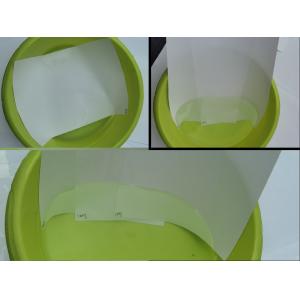

Add to Cart
Biodegradable Moisture-Proof Tear Resistant Stone Paper 100gsm Synthetic Paper For Disposable Packaging
stone paper, as the name suggests, is made from stone. But we never mine the earth for the stone used in our production process.
The primary ingredient in stone paper is Calcium Carbonate (CaCO3)
which comes from stone or rock, so stone paper is also called rock
paper.
Stone Paper is made from crushed stone powder, combined with a
non-toxic and recyclable binding agent HDPE (High Density
Polyethylene). Stone paper is an extremely environmentally friendly
paper which is different from traditional paper because it has non
wood-pulp.
Making stone paper is a patented paper making technology which will
not pollute air and water.
No chlorine or acids are utilized in the production process, and
the resulting stone paper is completely non-toxic, and is even food
safe.
Stone Paper is photo-degradable; it will gradually degrade when
exposed to direct UV light. It will crack like an egg shell and
turn back to calcium carbonate, regaining its original stone form
over time.
It is not a synthetic paper, it is simply a very durable paper made
from stone. It is a smarter option for uses that demand durability,
superior quality and environmental properties.
Energy use and carbon emissions
We take carbon emissions seriously. So seriously that we’re
neutral.
It takes a lot of energy to process timber trees into the pages of
a notebook. In fact, in order to produce a metric tonne of
traditional paper, almost 6 times more energy is required than
stone paper.
We use solar energy to power the development of our paper. Karst’s
stone paper has a 60% smaller carbon footprint than regular paper.
But making our carbon footprint smaller is not enough— we need to
neutralise it altogether. We invest in carbon offsets to make sure
nothing we do is at the expense of the planet. This is done with a
partnership with Carbon Neutral.
Waste production & recyclability
When making traditional paper, it’s not possible to convert
absolutely 100% of a tree into paper. Even when making traditional
paper from recycled material, solid waste is produced. To make one
metric tonne of traditional paper, over 150 kilograms of solid
waste is produced. When making traditional paper from recycled
materials, there is even more solid waste (190 kg), as recycled
paper contains more impurities. While it is possible to recycle
paper multiple times, there is a finite limit— it can only be
recycled a maximum of 5 to 7 times.
When making stone paper, the waste and scraps that are produced
come from end cuts from rounding out the corners of pages or test
batches. Much like the closed-circuit water system, stone paper
produces no solid waste as the scraps can be recycled into more
stone paper in the next batch. Unlike traditional paper, stone
paper can be recycled indefinitely.
While the cellulose in plant fibres becomes compromised when
processed multiple times, calcium carbonate remains intact, meaning
it can be recycled over and over again.
Water consumption
stone paper saves significant amounts of water!
stone paper uses significantly less water to produce than regular
paper. Each metric tonne of stone paper requires 27 gallons of
water, which is circulated in a closed system and reused.
In comparison, those 27 gallons of water would make only 9 A4
sheets of traditional printer paper. About 15.5 thousand gallons of
water are necessary to make 1 metric tonne of traditional paper.
For 1 metric tonne of paper made with recycled pulp paper, about
5.8 thousand gallons are required. This is significantly less than
making virgin paper, but remember that recycled material is
dependent upon virgin the existence of virgin materials.
The Features of (RPD) Rich Mineral Paper Double Coated Stone Paper
For paper applications
100-200 microns thick
80% calcium carbonate + 20%PE
| Type | Thickness | Density | Base Weight | Opacity | Applications |
| um | g/cm3 | (g/m2) | |||
| (micrometers) | |||||
| (RPD)Rich Mineral Paper Double Coated | 100 | 1.2 | 120 | >90% | Food packaging, Notebooks, Notepads, Hotel supplies |
| 120 | 144 | >90% | Food packaging, Notebooks, Notepads | ||
| 140 | 168 | >90% | Paper bags, manuals, envelopes, notebooks | ||
| 160 | 192 | >90% | Magazines, books, Paper bags, Wrapping papers | ||
| 180 | 216 | >90% | Kid's books, Maps, Calendar, labels & Tags | ||
| 200 | 240 | >90% | Publishings, wallpaper,And other special |
